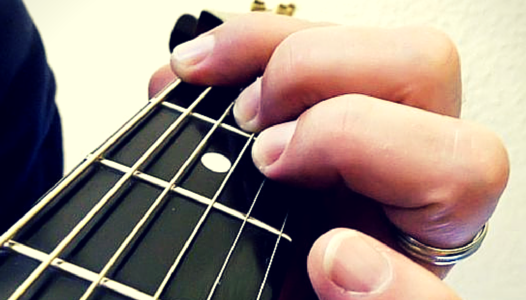
Fill in the blank: "My fingers are too ___ to play the guitar." If you haven't said this, you probably heard someone else say it. Either fingers are too short, too long, too meaty, or too weak. Some don't bend the right way. Some are just plain clumsy. Fact is everyone encounters challenges with their fingers in the early days of playing guitar. It's all part of the process. The trick is that we have to adapt the hands we were born with to the demands of the fretboard. So love your fingers. They'll do just fine.
If you blame your finger size or shape for lousy playing, remember Django Reinhardt, one of the biggest names in the history of guitar. Django lost the use of his ring and pinky fingers on his fretting hand in a fire and then taught himself to play, and play brilliantly, using only his remaining two fingers. So don't fret over some less-than-optimal aspect of your hands. Try out these 7 tips to help you do something about them:
1. Warm-up and strrrretch those digits. Properly warming up the muscles and tendons in your hands before playing not only reduces the possibility of injuries, but it limbers up your fingers so you can play accurately and with more reach. Many guitarists use simple scales - played slowly and evenly - to warm up. Give some of the warm-up stretches and exercises a go and feel the difference in your fretting hand.
2. The stronger the hand, the stronger the player. Chances are if your playing is sloppy, it's not so much a finger issue as it is an undeveloped fretting hand. In addition to warming up your fingers, incorporate special exercises into your practice, like Spider Legs to develop the strength, flexibility, and coordination that will help improve your sound and technique. For more ways to beef up your playing muscle, check out Tips for Strengthening Your Fretting Hand.
3. Quit slouching! No matter what kind of fingers you have, if you aren't using them correctly, the strings aren't going to sound cleanly. Many players get into the habit of collapsing back their fingertips. You need to be conscious of using the actual tip (closer to the nail) to fret the string, especially if you have larger fingers. Position your thumb more towards the center of the back of the neck for added leverage to curl your fingers over and come down vertically on the strings. The tip is the only part of your finger that should make contact with the guitar string.
4. One finger can do the work of two. If the chord you're playing requires two adjacent strings to be pressed at the same fret, you can use one finger to fret them both. For example, open E minor requires the A and D strings to be held down at the 2nd fret. If your fingers are too wide, try pressing down both strings with your index or middle finger, barring the strings.
5. Use lighter gauge strings. The thinner the strings, the more space there is between them. However, thinner strings will generally produce a thinner tone, so there's a trade-off to consider here—tone vs. playability. With an acoustic guitar, you might want to try a relatively light gauge such as 11's or even 10's. With an electric, 9's can still produce a decent tone and help reduce finger obstruction.
6. The P-word. Mastering anything comes down to one simple word: practice. No matter what type of fingers you have, you will eventually adapt and grow into your own unique playing style if you keep at it. The more you play, the more you will find subtle ways of compensating for any perceived disadvantages in finger size.
7. A wide neck for wide fingers. If you've applied the above tips for a couple months and nothing changes, you may want to visit a shop and try out a few guitars. While classical and 12-string guitars naturally have wider necks, there are also wider neck electric and steel string acoustics available. The wider the nut, the more space between each string and the less obstruction for your fingers. You'll also benefit from a relatively flat fretboard radius as opposed to a curved one.
Christopher Schlegel's Left Hand Technique for Beginners and Mechanics of Fretting Notes are excellent tutorials on proper fretting hand technique. Be sure to check them out.
Oh, and the next time you lament your digits for their shortcomings and think you're doomed as a player because of them, just watch this clip of a North Korean kindergarten student playing guitar. Uh-huh. I know.